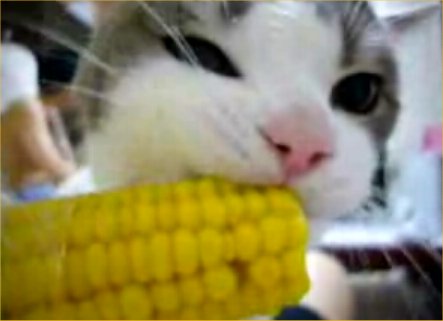A recent post at the Historical Society’s blog, “Corn in the USA,” by Heather Cox Richardson reminded me of my grudge against the fed’s whenever I buy a case of beer (at least). It is a brief overview of the history of corn growing since Christopher Columbus with useful pointers on federal agricultural policy since the 1970s. Among the unintended consequences of federal subsidies of corn are these:
The flood of cheap corn had a number of dramatic effects.
It has involved the government deeply in agricultural production. As the price of corn dropped, the only way for farmers to survive was to plant more and more, so they could collect more subsidy money. Farm subsidies now run over $12 billion a year. Government statistics don’t easily reveal how much of that money goes to corn growers, but, according to the USDA, 97% of the farms that grow grain collect subsidies, and 90% of grain growers produce corn.
It has cemented the power of agribusiness. More than 60% of subsidy money goes to big growers. The push for production favors agribusiness, which can exercise huge economies of scale. (Nixon and Butz not only foresaw this move, but encouraged it because they believed it would keep prices down.)
Cheap corn has also changed the way we eat. It finds its way into most of the foods in American supermarkets, as high fructose corn syrup (HFCS) into soda and processed foods, of course, but also into less obvious places like beef, since corn was so cheap cattle growers began to use it to feed animals that had always fattened on grass. The raft of organizations concerned about America’s obesity epidemic have pointed to the ubiquity of cheap corn as a key ingredient in our increasing health problems.
It has also most likely changed recent demographics. Researchers speculate that heavily subsidized US corn has combined with NAFTA to disrupt rural Mexico, where small farmers can’t compete with cheap US corn. They have left rural regions to move to cities in Mexico, and while no research has been conducted on cross-border migration, it seems likely that displaced farmers are making their way to US farm operations to find work.
If you want a reason to reach for a beer, read this piece, preferably at a bar featuring IPA’s during Happy Hour.

See the PBS documentary “King Corn” for a more in-depth look at the effects of government subsidies and the subsequent flood of cheap corn on the market–everything from contribution to obesity and diabetes (it’s ridiculously cheap to put high fructose corn syrup in just about anything) to illegal immigration (federal corn subsidies coupled with NAFTA equals Mexican farmers who can no longer compete in the market, are driven out of business, and come north looking for work).
http://www.pbs.org/independentlens/kingcorn/
It’s bad enough that farm subsidies are what Agribusinesses use to launder their money. That these subsidies should affect the price of IPA is an outrage–nay, an offense against the moral structure of the cosmos.
Not being an IPA guy, but in a strong spirit of solidarity, after reading this I immediately went to my regular watering hole and had a pint of Sierra Harvest and then a slightly smaller Sierra Bigfoot. Giddy-up.
I always suspected, but never knew, that drinking IPA was an act of philanthopy.
On the issue of corn ethanol, I want to make a couple of points:
1) Ethanol is a bad fuel. Better biofuels (more like gasoline) are being developed, which are intrinsically better and do not require a complete reworking of our infrastructure.
2) Corn is a bad source for ethanol. Sugar is better, and there is plenty of capacity in south America (e.g. Brazil and Cuba)
In fine, the ethanol subsidy has nothing to do with energy independence or the environment — it is just another way to subsidize agribusiness (as was suggested)
Among my many sins are those connected with assisting with the siting and building of 2 ethanol plants in western Illinois. The intent of these plants was to provide a ready market for locally grown corn, so that the farmers were not stuck with dealing with the Agri-Oligopoly that runs the corn markets. The hope was that we could keep some more of the value of that corn locally to support our small towns and surrounding farms.
Ethanol was initially intended to be an additive to reduce pollutants that was not as environmentally nasty as the then used MTBE. As ARicketson points out, it is much easier to make rum out of sugar cane than it is to make whiskey out of corn. The Brazilian process essentially is based on rum, and the American ethanol industry is essentially making whiskey. So, ethanol is not a path to energy independence so that we can give them thar A-Rabs the Upraised Middle Digit. It is much too inefficient a process for that. And in the true spirit so to speak of this Blog, I must admit that when I toured an ethanol plant, and I watched them ruin, I mean “de-nature” those high octane corn squeezings by mixing gasoline(!) in with them, there were tears in my eyes.
The ethanol industry the last time I looked was largely made up of plants built largely by rural cooperatives and local funds. Viewed appropriately as an additive to fuel, and not a replacement for petroleum, the aims of most of the people I knew in that industry were congruent with the ideals of this place that celebrates place and front porches.
Comments are closed.